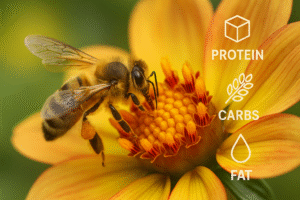Fun Fact: Did you know that nearly one in nine people in the world face hunger daily, despite the world producing enough food to feed everyone?
In today’s world, food security isn’t just about having enough food to eat; it’s a complex issue that has a direct impact on public health, influencing everything from nutrition to disease prevention. So, how exactly does food security tie into public health, and why should you care? In this blog, we’ll dive deep into how these two critical areas intersect and what it means for us as individuals and as a society.
Understanding Food Security and Its Components
Food security means that everyone, at any time, has reliable access to adequate, safe, and nutritious food that aligns with their dietary needs and preferences for a healthy, active life. According to the World Health Organization (WHO), food security is built on four pillars:
Availability: Ensuring a consistent food supply through agriculture, infrastructure, and trade.
Access: Having the resources to acquire and purchase food.
Utilization: Proper use of food based on knowledge about nutrition, cooking, and sanitation.
Stability: Having constant access to food despite economic or environmental instability.
Without these, people may face hunger, malnutrition, and diet-related diseases. The effects are not just individual but societal, impacting healthcare systems, economies, and community well-being.

How Food Security Affects Public Health
Nutrition and Chronic Diseases
When people have food security, they’re more likely to have balanced diets that are rich in essential nutrients. However, food insecurity often leads people to depend on cheap, calorie-dense, but nutrient-poor foods, which can lead to malnutrition, obesity, and a host of chronic diseases such as diabetes, hypertension, and heart disease.
Example: In some urban areas in India, families experiencing food insecurity may prioritize starchy, processed foods over fresh produce. This increases the risk of childhood obesity and diabetes, diseases that then burden healthcare systems.
Mental Health and Food Insecurity
The stress of food insecurity can lead to anxiety and depression. Knowing that you don’t have enough food or that you’re unable to feed your children adequately can create significant mental strain.
Case Study: In a study by the Journal of Hunger & Environmental Nutrition, children in food-insecure households displayed more behavioural issues, and parents often reported higher levels of anxiety and depression.
Food Safety and Disease Prevention
Safe food is integral to health. Insecure food systems can lead to issues like foodborne illnesses. The quality of available food, especially in times of crisis, can degrade, increasing the risk of consuming contaminated or unsafe food.
Real-life Example: Outbreaks of illnesses like salmonella and E. coli often stem from improperly handled or stored food. In regions with poor infrastructure and food storage facilities, food safety becomes even harder to maintain.
Food Security and Children’s Health
For children, food security is particularly crucial as it impacts their physical growth, cognitive development, and immune health. Food-insecure children may face stunted growth, reduced learning ability, and higher susceptibility to infections.
Case Study: UNICEF (United Nations International Children’s Emergency Fund) reports that malnutrition, resulting from food insecurity, is a leading cause of child mortality in many parts of the world.
The Effect of Climate Change on Food Security and Public Health
Climate change affects food security by impacting agricultural productivity and food supply. Climate change-driven extreme weather events, including droughts, floods, and storms, can disrupt food production and distribution, thereby increasing food insecurity and impacting public health.
Example: The frequent droughts in parts of India have significantly reduced crop yields, leading to increased food prices, higher malnutrition rates, and more cases of malnutrition-related diseases.
Moving Forward: Steps for Enhancing Food Security and Public Health
Promoting Sustainable Agriculture
Using sustainable agricultural methods—such as crop rotation, minimal pesticide use, and organic farming—helps support long-term food production while protecting soil and environmental health. Encouraging local farming also reduces dependency on external food sources and ensures a stable supply.
Example: Organizations like the Indian Council of Agricultural Research (ICAR) promote these practices, aiming to empower farmers and increase food security in rural India.
Strengthening Food Distribution Systems
Improved food distribution systems can prevent food waste and ensure that all communities, especially vulnerable ones, have access to nutritious food. Government programs and NGOs often work in this area to combat food deserts and distribute surplus food to needy families.
Example: Food banking initiatives such as Feeding India by Zomato work to reduce hunger by redirecting surplus food from businesses and individuals to people in need.
Education on Nutrition and Food Safety
Educating communities on proper nutrition, food safety, and health can have lasting effects on public health. Awareness campaigns can help people make healthier choices, learn about proper food handling, and understand the importance of balanced diets.
Real-life Impact: Programs like the National Nutrition Mission (Poshan Abhiyaan) by the Government of India aim to improve nutrition awareness, especially among women and children.
Addressing Poverty and Employment
Creating job opportunities and improving wages can directly increase food security, as people will have more resources to buy nutritious food. Economic stability is foundational to public health, allowing people to lead healthier lives without the constant worry of food shortages.
Example: Rural job programs, such as the Mahatma Gandhi National Rural Employment Guarantee Act (MGNREGA), have played a significant role in providing income to rural families, which, in turn, positively impacts food access and security.
Conclusion
Food security and public health are intricately linked. Guaranteeing that everyone has access to safe, nutritious, and affordable food can lower the likelihood of chronic illnesses, support mental health, and boost the well-being of entire communities. With rising concerns like climate change and urbanization, the challenge of achieving food security is substantial but not insurmountable. By working on sustainable practices, strengthening our distribution systems, and educating people, we can make strides toward a world where food security supports a healthy, thriving public.
Author’s Note:
Food security may seem like a global or government issue, but it’s something that affects us all. Understanding this connection to public health empowers us to make healthier choices and advocate for solutions that benefit everyone.
G.C., Ecosociosphere contributor.
References and Further Reading:
- World Health Organization – Food Security
- The Association of Household Food Insecurity and Obesity Prevalence Among Children and Adolescents in the United States. https://core.ac.uk/download/51292873.pdf
- Why Good Nutrition is Key to Your Overall Wellness: A Beginner’s Guide. https://ironpinoy.com/why-good-nutrition-is-key-to-your-overall-wellness-a-beginners-guide/
- Nestle’s baby food brands sold in developing countries contain high levels of added sugar. http://www.foodsupply.news/2024-05-02-nestle-baby-food-high-levels-added-sugar.html
- Food Insecurity Essay – 1072 Words | Bartleby. https://www.bartleby.com/essay/Food-Insecurity-F3C5Z5NKVJ




